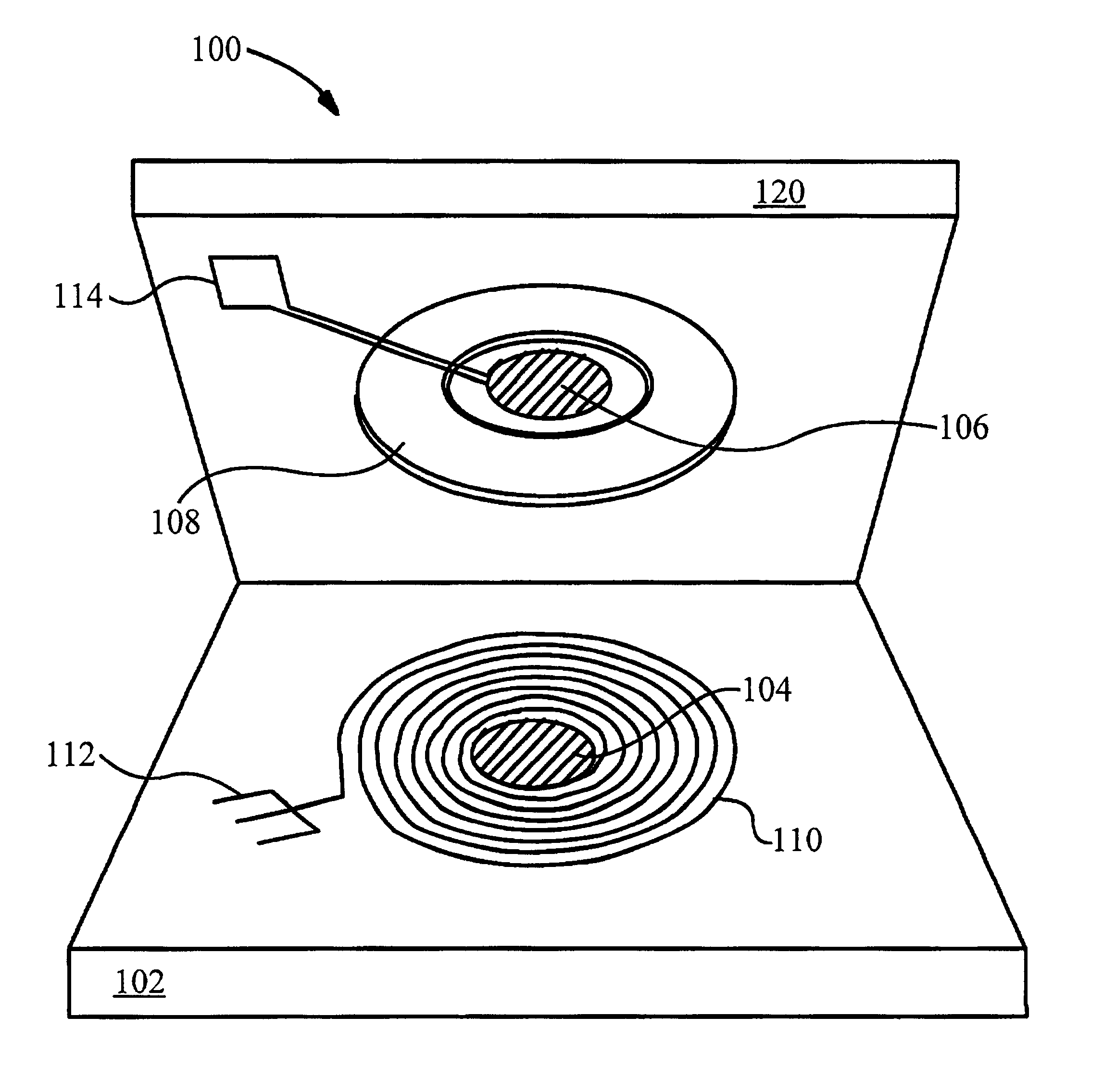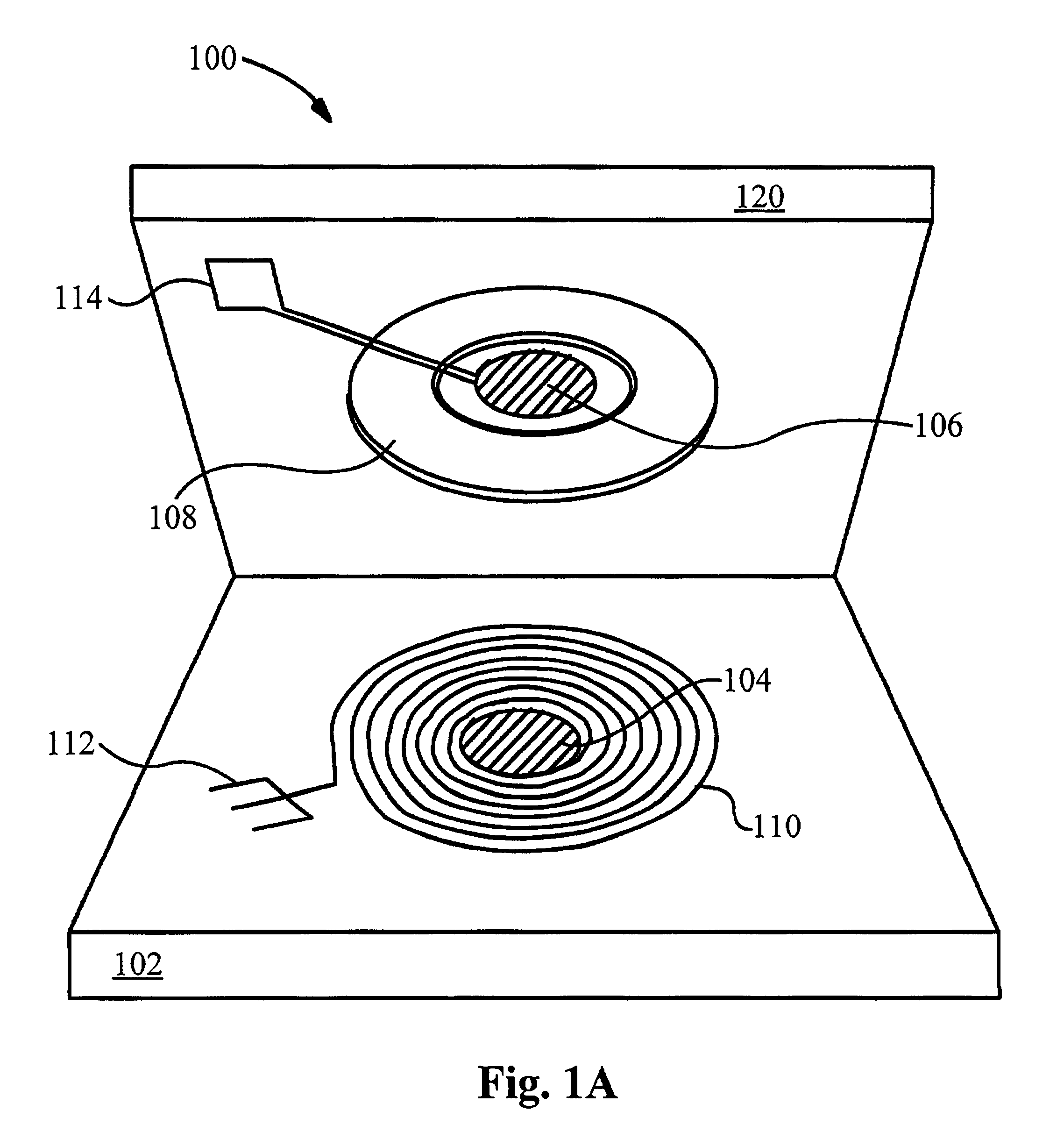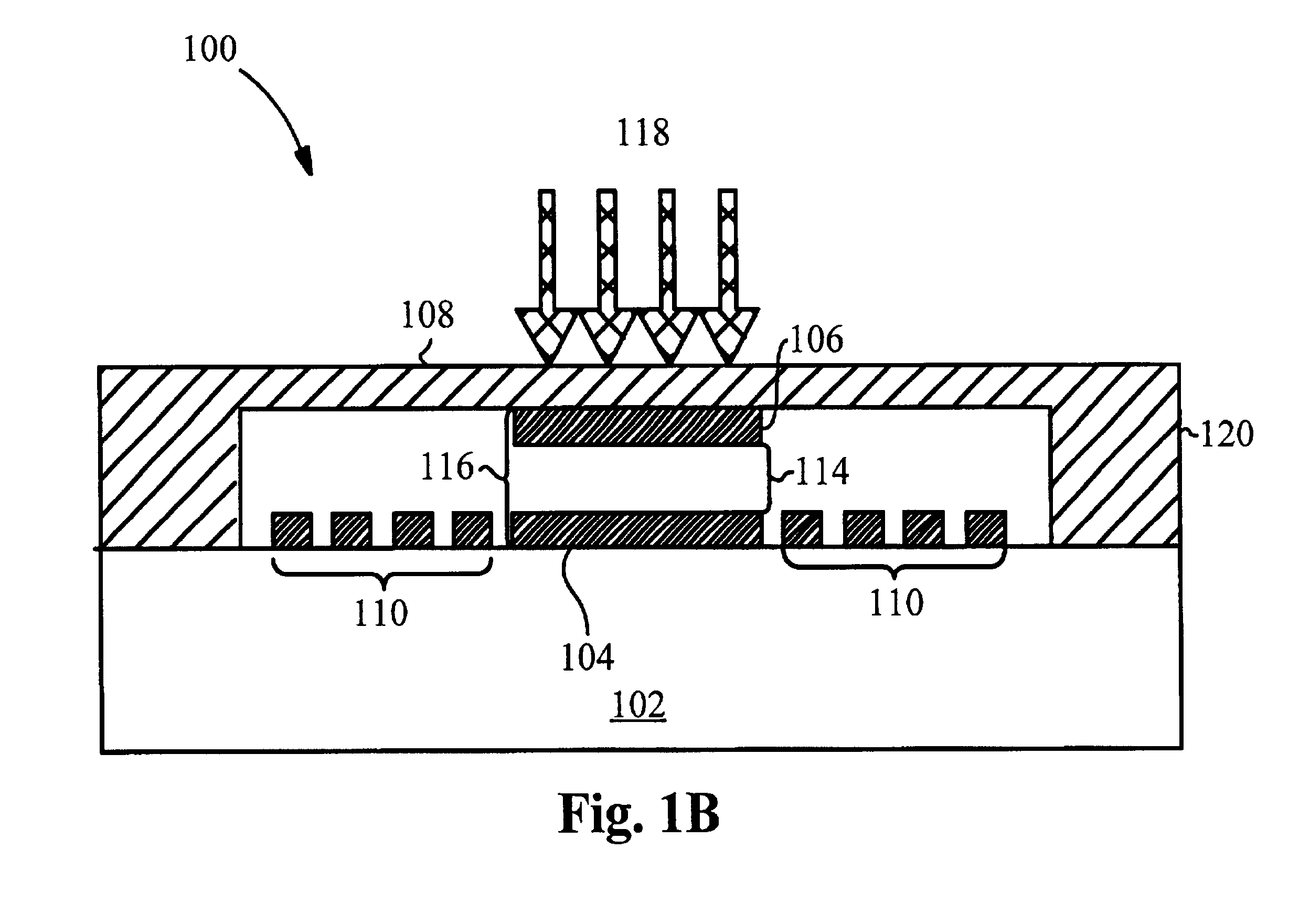Implantable continuous intraocular pressure sensor
a continuous, intraocular pressure sensor technology, applied in the field of pressure sensors, can solve the problems of intraocular pressure, decreased accuracy of non-contact tonometers, optic nerves, etc., and achieve the effect of wearing safely, comfortably and conveniently
- Summary
- Abstract
- Description
- Claims
- Application Information
AI Technical Summary
Benefits of technology
Problems solved by technology
Method used
Image
Examples
first embodiment
[0044]FIG. 1A shows a split-level view of a pressure sensor 100 according to the present invention. Pressure sensor 100 comprises a lower capacitor plate 104, an upper capacitor plate 106, and an inductor 110. The inductor 110 is a micromachined flat spiral coil that spirals around the lower capacitor plate 104. Typically, the inductor 110 is coplanar with the lower capacitor plate 104, however this need not be the case. The upper capacitor plate 106, the lower capacitor plate 104, and the inductor 110 are typically made of Al, Au or Cu. The lower capacitor plate 104 and the flat inductor coil 110 are placed on top of a substrate 102, which may be a deformable or non-deformable membrane. The substrate 102 is typically made of glass.
[0045]The pressure sensor 100 further includes a deformable membrane 108 bonded to the substrate 120. The membrane 108 is typically made silicon or of plastic materials including Silastic™, amorphous fluoropolymers such as Teflon™ AF, and polyimide such a...
second embodiment
[0046]The pressure sensor 100 illustrated in FIG. 1A may be produced using the flex circuit technology according to the present invention. An exemplary embodiment of the process of fabricating a sensor such as the sensor 100 is shown in FIGS. 2A-2E. As shown in FIG. 2A, polymer film 206 including plastic materials as described above is spun. cast onto a 4-inch silicon wafer 202 coated with a thick release layer of aluminum 204. The silicon wafer 202 allows constructing polymer films 206 from about 5 μm to about 100 μm thick. A thin metal seed layer 208 of Cu or Au is sputtering deposited onto the polymer film 206. A photoresist layer 210 about 25-50 microns thick is spun cast onto the seed layer 208 and patterned to form the coil 110 and capacitor plates 104 and 106, as shown in FIG. 2B. The wafers 200 are placed into an Au plating path and Au is selectively plated up through the openings in the resist 210. The thin metal seed layer 208 is etched away from the areas between the plat...
PUM
 Login to View More
Login to View More Abstract
Description
Claims
Application Information
 Login to View More
Login to View More - R&D
- Intellectual Property
- Life Sciences
- Materials
- Tech Scout
- Unparalleled Data Quality
- Higher Quality Content
- 60% Fewer Hallucinations
Browse by: Latest US Patents, China's latest patents, Technical Efficacy Thesaurus, Application Domain, Technology Topic, Popular Technical Reports.
© 2025 PatSnap. All rights reserved.Legal|Privacy policy|Modern Slavery Act Transparency Statement|Sitemap|About US| Contact US: help@patsnap.com



